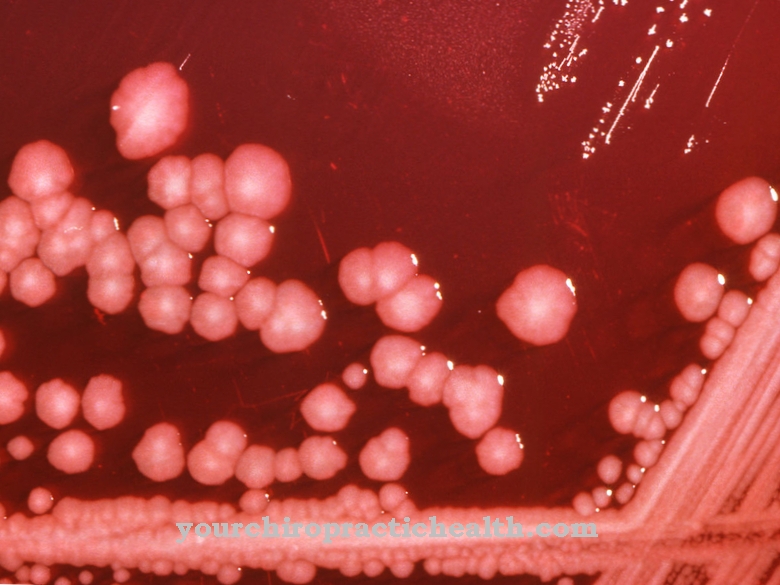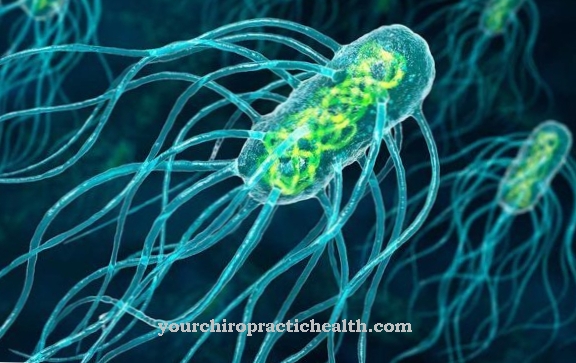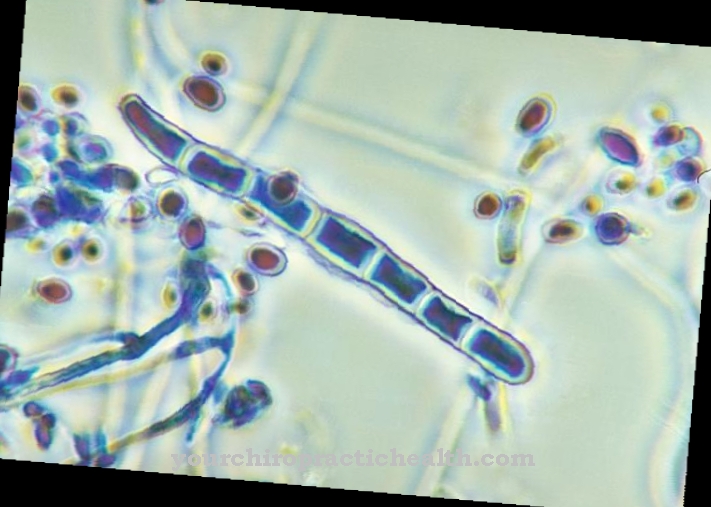The Mycobacterium tuberculosis is a bacterial species from the Mycobacteriaceae family. The species is considered to be pathogenic to humans and corresponds to the most important tuberculosis pathogen. Every third person is estimated to be infected with tuberculosis.
What is mycobacterium tuberculosis?
Mycobacteria are a bacterial genus with about 100 representatives and are the only genus within the Mycobacteriaceae family. The representatives of the genus are difficult to stain with the Gram stain. The structure of their cell walls is still the same as that of gram-positive bacteria.
The cell wall of mycobacteria is therefore not equipped with an outer membrane, but consists of multilayered peptidoglycans. The DNA analysis of the genus confirms the assignment to the gram-positive bacteria. Since they have a high GC content within the DNA, they also belong to the Actinobacteria.
Mycobacterium tuberculosis is a human pathogenic species of Mycobacteriaceae. The pathogen corresponds to the most important tuberculosis pathogen and can infect different animal species with tuberculosis in addition to humans.
Mycobacterium tuberculosis is rod-shaped and unable to actively move. The acid-fast bacteria of the species carry a bacterial cell wall made of arabinogalactan, mycolic acids and lipophilic cell wall components.
The individual representatives of the species measure up to five μm. The type of bacteria occurs all over the world. It is estimated that one in three people is infected with tuberculosis. Accumulations occur in the countries of the Third World.
Occurrence, Distribution & Properties
Bacteria of the species Mycobacterium tuberculosis live aerobically. The representatives of the species therefore need oxygen for their metabolism. This distinguishes them from anaerobes, who can survive in an oxygen-free environment and, in case of doubt, use other substances to generate energy.
The tuberculosis pathogen reproduces exclusively intracellularly and preferably uses macrophages to reproduce. Characteristically, the bacteria grow extremely slowly and divide at most every 15 hours. Weak disinfectants can resist the bacteria.
Bacteria of the species Mycobacterium tuberculosis often survive within the macrophages for several years. Since macrophages belong to the immune system, they evade the immune system with the macrophage colonization and are not attacked.
After years of latent infection, the infection usually reverts to an active stage. The triggering circumstances are usually stress factors or other immunosuppressive processes.
The bacteria have fat-splitting and fat-synthesizing enzymes. When in doubt, the bacteria are able to live on their own fat layer in the cell wall. During the infection, external cholesterol is produced in the hosts, which Mycobacterium tuberculosis also serves as a nutrient. The waxy, fatty cell wall of the bacterial species protects against destruction by the immune system and disrupts signal transduction. There is therefore no full immune response after infection.
When inactive, bacteria of the species Mycobacterium tuberculosis live on their own fat layer and do not divide cells. Even in this state, however, enzymes such as catalase are active and inactivate substances such as antibiotics to protect the bacterium.
Reading errors in the DNA increase the mutation rate of the bacteria. For this reason, the type of bacteria can develop resistance even in the phase of latent infection.
The pathogen is transmitted airborne. This route of infection corresponds to the droplet infection. However, there is also the possibility of oral transmission. For example, the consumption of infected meat or other animal proteins can lead to infection.
Bacteria of the species Mycobacterium tuberculosis are always pathogenic to humans. In the inactive phase, the infection does not cause any symptoms, but it has long since started.
You can find your medication here
➔ Medicines against coughs and coldsIllnesses & ailments
The bacterial species Mycobacterium tuberculosis is a causative agent of tuberculosis. After the initial infection, the latency period is up to eight weeks. After that, unspecific symptoms appear. In addition to fever and night sweats, weight loss and loss of appetite are characteristic early symptoms.
If a tuberculous primary complex develops or a pulmonary course begins, coughing fits, hemoptysis (coughing up blood), lymph node swelling and dyspnoea (shortness of breath) are added to the symptoms mentioned.
The individual immune system and the number of pathogens transmitted determined the course of the infection. People with a strong immune system develop organ manifestations in only five percent of all cases. If organ involvement occurs, this type of manifestation takes place within the first two years after primary infection. Immunodeficient patients suffer from organ manifestations much more often. Such a course has been observed particularly often in people with alcoholism, diabetes, pre-existing pneumoconiosis, malnutrition (malnutrition) or lymphomas.
In addition, drug immunosuppression with substances such as ciclosporin and cytostatics can increase the risk of organ manifestations. Also to be mentioned in this context are acquired immunodeficiencies such as HIV infections, congenital immunodeficiencies and old age, which affects the immune situation in an age-physiological way.
The tuberculosis caused by Mycobacterium tuberculosis shows different clinical forms and stages. Primary tuberculosis can correspond to pulmonary tuberculosis, hilar lymph node tuberculosis, exudative pleurisy, miliary tuberculosis or Landouzy's sepsis, for example. In post-primary tuberculosis, intestinal involvement, urogenital tuberculosis, tuberculous meningitis, skin manifestations and bone and kidney manifestations are conceivable.
Therapy for tuberculosis is carried out with multiple combinations of different antibiotics. These anti-tuberculosis drugs are given for several months. In recent years, the development of resistance in the bacterial genus Mycobacterium tuberculosis has made therapy more difficult for those affected. As far as possible, the aim of the treatment is to reduce immunosuppressive factors and in this way to use the immune system as a natural support far away from drugs.

























.jpg)


